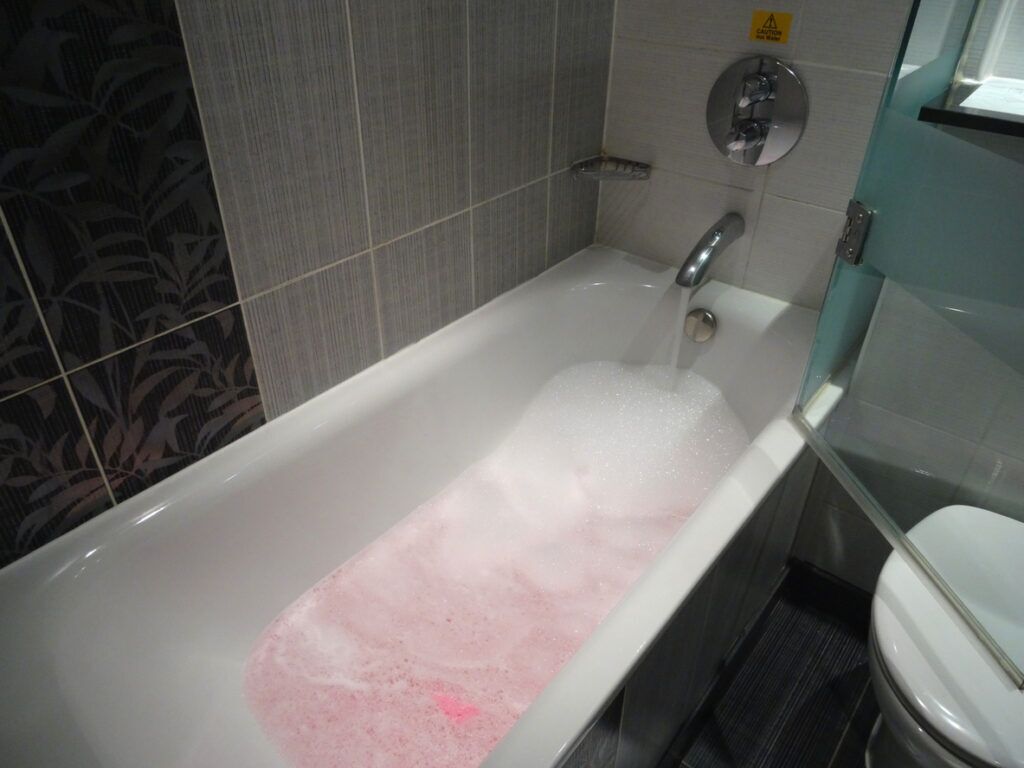Unpacking the Causes of Waste in the Bathtub
Call TodayThe article author is making several great observations regarding Why is There Sewage Coming Up Through the Bathtub as a whole in this article below.

Sewer back-up in the bathtub can be a traumatic and unhygienic problem for any home owner. Not only is it troublesome, however it also presents severe health and wellness threats and suggests underlying issues with the plumbing system. Understanding why sewage is coming up via the bathtub is important for taking suitable action to resolve the trouble successfully.
Introduction to the Concern
Usual Reasons for Sewer Backup
Obstructions in the Sewer Line
One of the most usual sources of sewer back-up is an obstruction in the sewer line. This can take place as a result of the buildup of particles, grease, or international items in the pipelines, stopping appropriate flow and causing sewer to support into your tub.
Tree Root Breach
Tree roots looking for dampness and nutrients can infiltrate drain lines with tiny cracks or joints. With time, these roots can grow and expand, creating substantial damages to the pipes and leading to sewer backup issues.
Understanding the Trouble
When sewer starts backing up right into the tub, it's a clear indicator of a trouble with the drain system. The wastewater that should be moving away from your home is instead locating its back into your home, which can cause considerable damage and health hazards.
Prospective Causes
A number of variables can add to sewage backup in the tub. From obstructions in the sewer line to issues with the plumbing infrastructure, determining the origin is important for locating a solution.
Aging Infrastructure
Older homes might have obsoleted plumbing systems that are a lot more vulnerable to corrosion, fractures, and deterioration. As pipelines age, they become much more susceptible to leaks and obstructions, boosting the possibility of sewage back-up incidents.
Heavy Rainfall or Flooding
During durations of heavy rainfall or flooding, the drain system might come to be overloaded with excess water, triggering back-ups and overflows. This can lead to sewer backing up into bathtubs and various other components inside the home.
Indicators of Sewer Back-up
Foul Odors
Unpleasant odors rising from drains pipes or fixtures, specifically in the bathroom, may show sewer back-up problems. These smells are typically solid and persistent, signifying an issue that calls for immediate focus.
Slow Draining Fixtures
Tubs, sinks, and bathrooms that drain pipes slowly or otherwise in any way could be experiencing sewage back-up. If several fixtures are impacted concurrently, it's most likely that the problem originates from an usual point, such as the primary drain line.
Gurgling Sounds
Strange gurgling or gurgling sounds originating from drains pipes when water is running in other places in the house are a sign of air caught in the plumbing system. This air build-up can result from sewage back-up and ought to be explored without delay.
Wellness Risks Connected With Sewer Back-up
Contamination of Water
Sewage backup can contaminate the water supply in your house, presenting a serious health threat to you and your family. Direct exposure to infected water can cause stomach issues, skin infections, and other health problems.
Mold Development
Dampness from sewage backup can produce ideal conditions for mold and mildew development in your home. Mold spores can exacerbate respiratory issues and trigger allergic reactions in sensitive individuals, making prompt clean-up vital.
Spread of Disease
Sewer includes harmful germs, viruses, and parasites that can trigger a series of illness, including liver disease, cholera, and gastroenteritis. Entering contact with sewer or contaminated surface areas places you in danger of infection.
Cleaning Up After Sewer Back-up
Sanitation Procedures
Completely disinfect and sanitize affected locations after sewer backup to eliminate dangerous microorganisms and avoid mold growth. Use appropriate cleaning items and safety equipment to make sure risk-free and reliable cleanup.
Reconstruction of Affected Locations
Repair any type of damage to flooring, wall surfaces, or fixtures triggered by sewer back-up. Depending on the extent of the damage, you may require to replace carpets, drywall, or various other products to recover your home to its pre-loss condition.
Immediate Actions to Take
Shutting Off Water Supply
In case of sewage back-up, it's necessary to shut off the water to stop further contamination and damage. Locate the main water shutoff valve in your home and shut it off up until the issue can be fixed.
Contacting a Professional Plumber
Managing sewage back-up is not a do it yourself job. Get in touch with an accredited plumber with experience in managing sewage-related issues to evaluate the situation and carry out needed fixings or clean-ups.
Preventing Contact with Infected Water
Till the sewage back-up is settled, avoid contact with polluted water to prevent the spread of bacteria and pathogens. Put on safety gear if you must be in the affected area and clean your hands extensively later.
Safety nets
Normal Upkeep of Sewer Lines
Schedule regular inspections and maintenance of your sewage system lines to recognize and attend to prospective problems before they escalate right into significant issues. This can include clearing out debris, examining for tree origin intrusion, and repairing any type of broken pipes.
Installing Bayou Shutoffs
Take into consideration setting up bayou shutoffs in your plumbing system to prevent sewage from flowing back right into your home during durations of heavy rainfall or flooding. These valves immediately close when water draws back up, shielding your residential property from contamination.
Appropriate Disposal of Home Waste
Avoid flushing anything aside from toilet tissue and human waste down the toilet to avoid clogs and obstructions in the drain line. Dispose of grease, oil, and other family chemicals properly to decrease the threat of plumbing troubles.
Why is there sewage coming up from my bathtub?
These gas fumes, like hydrogen sulfide – the gas that leaves a rotten egg smell in its wake and is highly flammable and toxic – can be hazardous to your health. Sewage poses major health risks as it contains harmful bacteria and microorganisms that can be dangerous if exposed to them.
Sewage cleanup should be considered an emergency.
So, why is there sewage coming up from your bathroom? There are several common causes of a sewage backup.
The most common reason for sewage coming up through your bathroom is a clogged sewer line. All plumbing in your bathroom connects to a single drain pipe that leads to the sewer line under your house. This drain line carries all wastewater and sewage away from your home to the city’s sewer system.
When the sewer line becomes clogged or blocked, wastewater has nowhere to go but back toward your house. This results in sewage coming up through your drains, often starting with your tub or shower.
Another culprit may be the sewage ejector pump, which is used when a bathroom, laundry room or any other type of plumbing fixture is located below the level of the main sewer or septic line flowing from the house. Most commonly, ejector pumps are used in homes with basement bathrooms or laundry rooms.
When you experience sewage coming up through your bathtub, it’s always best to contact a professional. Attempts to fix a clogged sewer line without experience often lead to more plumbing damage.
Make sure that no one enters the affected area, and open as many windows as possible. Pre-treat the flooded area with small splashes of chlorine bleach. Wear protection gear like rubber gloves, a mask, and water-resistant coveralls.
https://www.shawlocal.com/the-herald-news/sponsored/2022/08/17/omega-plumbing-10199038/

Hopefully you enjoyed reading our post about Water Coming up Bathtub Drain. Thanks a lot for taking time to browse our short article. Enjoyed our review? Please quickly share it. Let others discover it. Many thanks for being here. Please come visit our site back soon.
Click Here